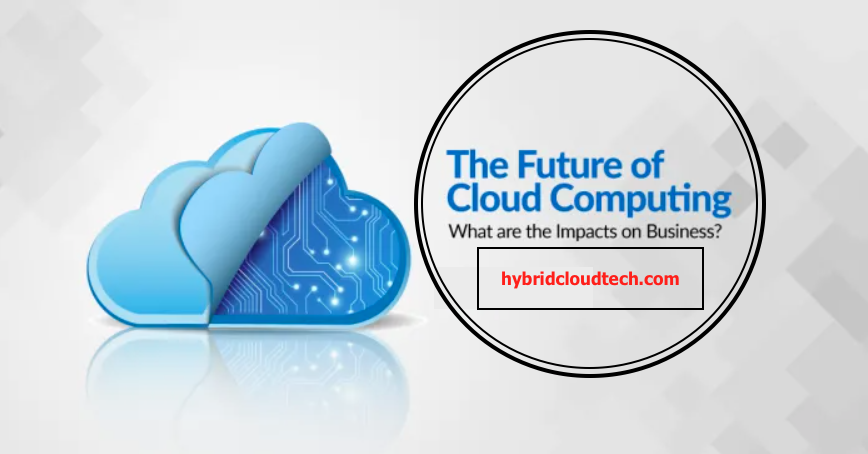The Future of Cloud Computing is here. Since the cloud has become a norm in modern society, not only being a presence in enterprise environments but also playing a role in daily users’ lives. As more servers around the world become dedicated to making up the cloud, an increasing number of devices and databases are now running and dependent on cloud services. These servers remove the need for physical servers in operation, making them more accessible and potentially more secure.
In 2023, cloud computing can widely be ascribed to off-site data centers and internet connections for access. With the growing demand for IaaS, SaaS, and PaaS, huge providers like Amazon Web Services, Google Cloud Platform, and Microsoft Azure have taken over the sphere with a collective market share of 66% globally. Cloud applications are actually expected to hit market saturation in just three years.
With those statistics in mind, it’s best to know where exactly cloud computing is headed in the future. Let’s take a look at some of the most promising developments that can be expected in the coming years.

Further AI Integration
Artificial intelligence and machine learning have already seen heavy integration in cloud computing and its development. With the huge leaps in AI that we have seen in 2023, we can only expect this to become more complex. Although AI is unlikely to take over completely in terms of cloud architects, it will definitely see a lot of use in improving cloud management.
As more hybrid cloud environments come into fruition, AI components will be indispensable factors in creating streamlined systems and keeping services updated. Perhaps most importantly, AI will also take on a large role in mapping data storage and ensuring cloud security. We already see complex commands being interpreted by the likes of ChatGPT, and leaders like AWS are already deeply entrenched in machine learning for cloud development and model deployment.
Considering how AI systems can now pass every exam in the world and even deceive the archaic Turing test to mimic sentience, it’s only fitting that we see these deployed in terms of cloud computing.
Edge Computing
Edge computing has been around for a while now, but further improvements will make a massive difference in terms of data processing and bandwidth allocation in cloud environments. As performance improves, we can expect latency to hit minimal levels that would blur the lines between cloud connectivity and direct access via on-site servers. You can take a look at the Relationship Between Edge Computing and Cloud Computing for further study.
This will especially see huge leaps as we phase into 6G, which is expected to be deployed commercially by 2030. (There are different Edge Computing Forecast, Trends & Market Size for this Year you can reference too). As of 2022, 70 countries already have full 5G implementation. With the daily transfer of data happening over the cloud, we can only expect speeds to become even more impressive. It is no longer a fascinating and distant notion to think that improvements will hit a negligible point that the common user doesn’t even feel anymore.
Further consumption and use of cloud computing solutions will be seen due to remote work and digitalization efforts in both major developed nations and third-world territories, with edge computing driving connectivity and faster facilitation.
Read Also
- Edge Computing Business Model Value Chain
- Autonomous Driving and Mobile Edge Computing
- What are the Economic Benefits of Edge Computing?
- Analysis of 5G Edge Computing & New Infrastructure
- Edge Computing and New Infrastructure – 5G Core
- Edge Computing, Cloud Computing & Fog Computing
Overtaking Architecture
Experts don’t expect cloud computing to completely overtake enterprise architecture to the point that the latter becomes fully obsolete. That said, cloud infrastructure has already surpassed data center spending in terms of investment.
With these developments, we can expect serverless computing to become the increasing norm. Predictions saw 92% of all data center traffic to be through the cloud by 2020, and that definitely happened. The COVID-19 pandemic even served to hasten the transfer to cloud data processing versus traditional data centers.
In the future, physical servers will take a huge backseat as resources and deployments will truly become at the forefront of data. This shift toward the cloud can also be attributed to the fact that data transfers have become so large, constant uptime has become a non-negotiable, and data security and privacy continue to be at risk.
Lackluster legislation in various nations regarding cloud computing is only complicated further by a distinct rise in cybercrime, expected to cost the world $10.5 trillion by 2025. It’s now an inevitability that architecture will take a sharp turn in response. There is more to come in Future of Cloud Computing.
Similar Posts
- Big Data Cloud Computing in the Next 10 years | Future
- Effects of Cloud Computing | CIOs worry of Negative Impact
- China’s Cloud Computing Investment Standards and Security Issues
- Cloud Computing & Mobility expose the Limitations of Existing Networks.
- Cloud Computing & Enterprise Computing faces the same Security Threats
- Is Cloud computing a Disruptive Technologies that may Change the World?
- Data: Cloud Computing Applications have not exploded on a large scale
- Cloud Computing Technology helps Human Resources Build a Smart Service Platform
Lastly, note that the exhilarating future of cloud computing involves the increasing adoption of Kubernetes and the Internet of Things, leading to a growing number of companies transitioning to the cloud.







